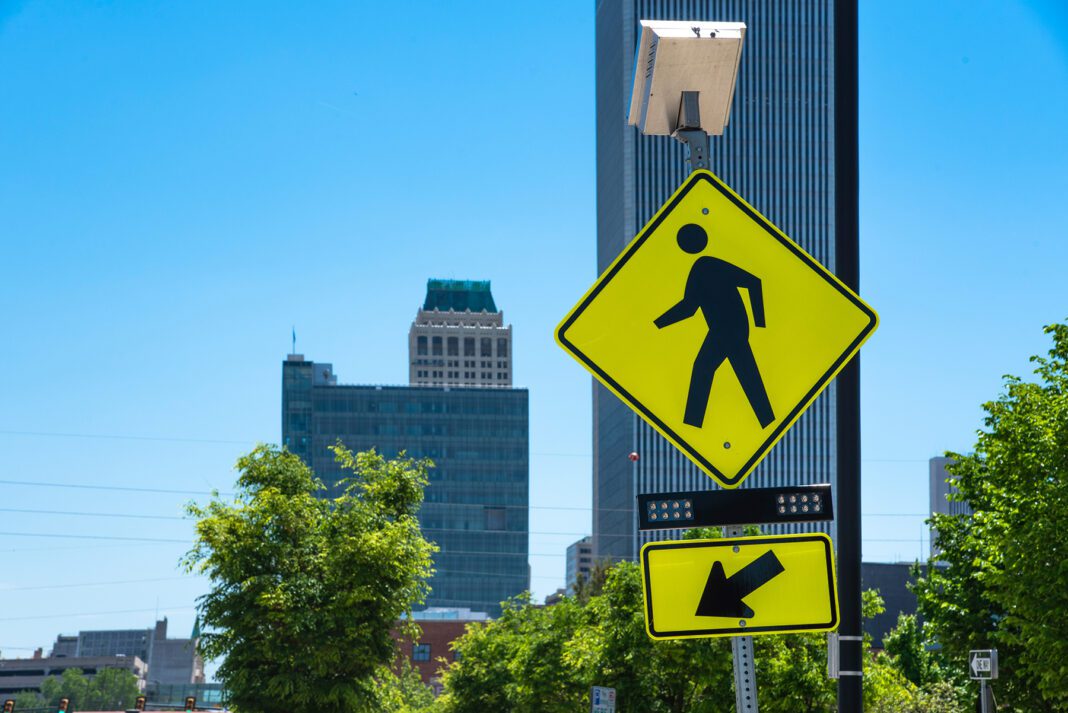Cities in Oklahoma are making progress toward creating pedestrian-friendly spaces that bring people together, help boost health and improve both the economy and the environment.
Planning officials in Oklahoma City and Tulsa say work is under way in their cities to enhance walkability features. That includes building sidewalks and adding crosswalks, lighting and landscaping to make areas safer and more inviting for those who prefer to, or need to, walk.
Walkability refers to the ability to walk to services and amenities – such as dining, shopping, education and outdoor recreation – within a reasonable distance.
A walkable area features elements such as a center or public space where people want to gather, mixed uses of businesses, sidewalks and streets designed with pedestrians in mind, and parks, green spaces and trees.
A walkable community also offers physical, environmental and economic benefits, says Justin Henry, a transportation program planner with the City of Oklahoma City.
For example, people are getting exercise as they’re walking, there’s less vehicle pollution involved and there are economic benefits to businesses with foot traffic. Henry cites the Plaza and Paseo Arts districts in Oklahoma City as examples of commercial areas that are inviting to pedestrians.
Susan Miller, director of the Tulsa Planning Office, says walkability creates opportunities for people to learn more about one another and their neighborhoods.
“It really just opens up all of this connection in your community,” says Miller.
Henry and Miller say Oklahoma City and Tulsa alike have made great strides with bike paths and trails, but that building more sidewalks remains a goal.
Henry mentions that Oklahoma City has built 175 miles of sidewalks since 2018 but “we still have a lot of neighborhoods we need to get more sidewalks into.”
Another upcoming effort, he says, will be a citywide plan to look at ways to make streets safer, such as with lighting improvements and crosswalks.
“Safety is always the first key element to improving walkability,” he says.
Miller says that in Tulsa, voters recently approved the Improve Our Tulsa capital improvements package that includes funding for sidewalks and street improvements. Looking ahead, Miller says her hope is that as shopping corridors develop and redevelop, they are done so with pedestrian-friendly elements in mind.
For example, the city is launching an effort to revitalize the 71st Street shopping corridor to include such features as new sidewalks, lighting and landscaping, according to the planning office’s project description.
Miller mentions that another area she’s excited about is the Arkansas River corridor. The city has River Design Overlay regulations that govern design and use for properties located in the district. One of the objectives is to establish the area as an interconnected, pedestrian-oriented cultural and recreational destination.
“We want this really nice, beautiful, connected, active riverfront,” she says.
Oklahoma City and Tulsa aren’t the only communities in the state creating more walkable areas.
“We’re seeing a lot of smaller towns and the smaller cities really invest in their downtowns again,” Henry says, citing Durant and Ardmore.
Check Your Score
Want to see how your city rates on a walkability index? Check outwalkscore.com, which analyzes walking routes to nearby amenities from an address, neighborhood or city at large.























